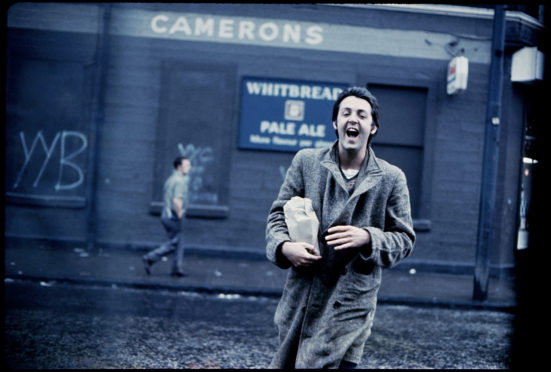
Paul McCartney sang of “smiles in the sunshine and tears in the rain, still take me back where my memories remain.”
The former Beatle was singing about the Mull of Kintyre but a new exhibition of the photographs of his wife Linda highlights the family’s enduring love affair with the west coast of Scotland.
Paul and Linda lived on High Park Farm near Campbeltown to escape the madness of Beatlemania, and a strand of The Linda McCartney Retrospective, at Glasgow’s Kelvingrove Art Gallery from Friday, focuses the lens on the happy times they enjoyed there.
Visiting Glasgow last December, Sir Paul told The Sunday Post: “I met Linda early in her career. I saw her photos when we started going out together, so I knew her work inside-out.
“So it’s lovely it’s being exhibited in Glasgow. Linda would have loved it, too, as she always loved the town.
“We drove through Glasgow a lot while we were going to our house in Kintyre.
“We did that journey many times. Linda would be very proud to be having an exhibition at Kelvingrove.”
The exhibition includes pages from Linda’s diaries.
“One of the pages has a big image of Scotland, with an exclamation mark,” said museum curator Fiona Hayes.
“It shows how much it meant to them. It was a place to get away, but also to explore their creativity.”
Tom Doyle, whose book called Man On The Run and published by Birlinn focuses on Paul’s life and career in the ’70s, said: “Paul still talks about the place with great affection.
“He’d bought it years earlier but didn’t do anything with it.
“It was just two rooms, but it had loads of land, so was quite private.
“It was Linda who suggested they go up there and get away from everything, and it became a spiritual home for her, too. It’s notable there is a statue there in her honour. You think about the madness he had gone through, all the Beatles legalities and it coincided with the rumour he had died and been replaced by a lookalike.
“So he also had a rough time there, some of the darker days of his life, and he almost had a nervous breakdown.
“He was drinking as soon as he got out of bed and it was Linda, more than the place, who saved him.”
But the place and its people also had an undeniable impact on the McCartneys and it’s why the family remains so positive about Kintyre today.
“I sense he fitted in with the community,” Tom continued. “It was a healing place and he wasn’t treated in a starry way. He would go into town for shopping. The locals looked out for him.”
The exhibition serves as a reminder of how talented Linda was, even prior to marrying music royalty.
Fiona said: “There is another diary page from the ’60s, while she was in New York, crammed with lists of photoshoots. It’s like a who’s who – Hendrix, The Beach Boys, The Beatles, Rolling Stones. Her pictures were portraits, not just publicity shots, which provided a connection with the subject.”
“Linda’s thing was always candid photography,” Tom agreed. “She would catch people unguarded.
“She was the first woman to have a cover shot on Rolling Stone and was very successful in the States, so it’s great that this exhibition is happening and fitting that it’s in Scotland.
“Part of Paul’s soul belongs to Scotland.”
The exhibition, which runs until January, covers Linda’s early days in photography, when she first picked up a camera after accompanying a friend to a class at the University of Arizona, to 1998, the final year of her life.
“Thanks to digital photography, people record everything around us now but she was always recording her life,” Fiona added.
“Seeing all of the images of Scotland she produced, we realised how very dear the country was to her and what a big part it played in her life.”

Enjoy the convenience of having The Sunday Post delivered as a digital ePaper straight to your smartphone, tablet or computer.
Subscribe for only £5.49 a month and enjoy all the benefits of the printed paper as a digital replica.
Subscribe